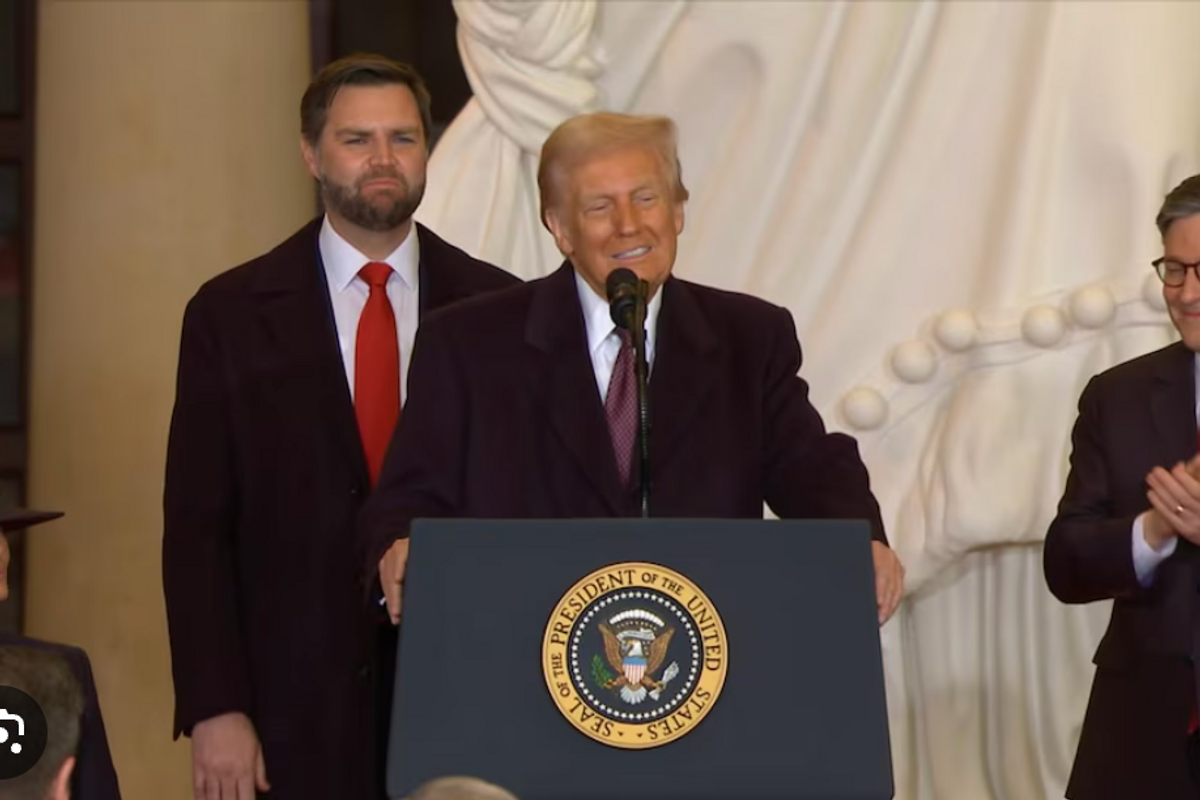President Donald Trump in US Capitol's Emancipation Hall with Vice President JD Vance on January 20, 2025
After being sworn in for a second term by U.S. Supreme Court Justice John Roberts on Monday, January 20, President Donald Trump gave his inaugural address — which was followed by a different speech later in Emancipation Hall.
CNN's Daniel Dale gave Trump many fact-checks during his first term as president. And he wasted no time fact-checking Trump's Emancipation Hall speech.
Dale's colleague Jake Tapper told him, "I know there are a lot of familiar lies that were just told, but bring us up to speed on what you think the biggest ones were." And Dale responded, "There were a bunch, Jake."
Dale noted that while there was only a "smattering of falsehoods" in Trump's "scripted" inaugural speech, he "returned to his familiar lie-a-minute style" during the "unscripted" Emancipation Hall speech.
"He said the 2020 election was totally rigged," Dale told Tapper. "We know that's a lie. He said his opponents tried to rig it this time; that is more nonsense. He said California Democrats tried to cheat, and that he thinks he would have won the state this time if it were not rigged. Well, it was a free and fair election in that state as well; he lost by more than three million votes."
Dale continued, "He claimed he won Alabama this time by 48 points — more like 30, 31. And then, on immigration, he spoke of the jails of every country in the world being emptied into this country. He has never provided any evidence for his familiar claim that foreign countries are deliberating emptying prisons to send people here as migrants."
The CNN fact-checker also debunked Trump's false claims about the January 6, 2021 attack on the U.S. Capitol Building.
"He repeated the claim that former House Speaker, Nancy Pelosi has admitted that she rejected a Trump offer of 10,000 National Guard troops on January 6, 2021," Dale told Tapper. "First of all, there is no basis for the claim Trump even made her such an offer. It wouldn't even have made sense, given he, the president, is the commander of the DC National Guard — the speaker of the House has no authority to deploy them or for a deployment."
Dale added, "And second of all, (Pelosi) never admitted that such an offer was made. She has steadfastly rejected that. She is on tape, on January 6, expressing frustration with the security failure that day, and saying: I take responsibility for not having them better prepared."
Reprinted with permission from Alternet.









